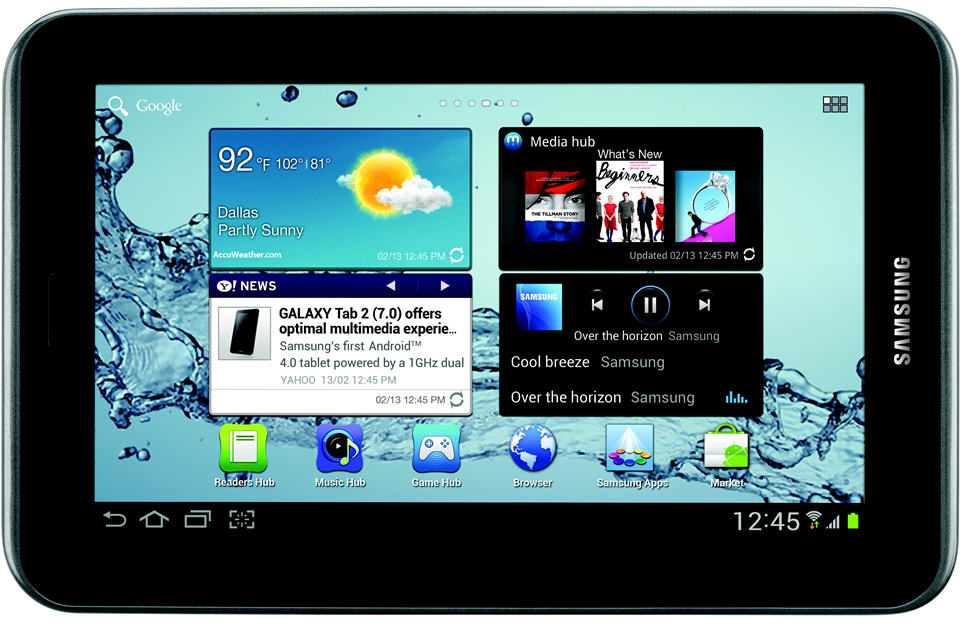
This column first appeared in the San Jose Mercury News
by Larry Magid
I’d love to be a fly on the wall when Apple CEO Tim Cook sits down with Samsung chief executive Gee-Sung Choi at a court-ordered conference to see if the two companies can resolve their string of patent-related suits and countersuits. Both companies agreed to sit down together under the watchful eye of a magistrate judge appointed by U.S. District Judge Lucy Koh.
Apple has claimed that some of Samsung’s 4G smartphone and tablets “slavishly” infringe on its patents. Samsung fired back with a countersuit, alleging that Apple stole some of its patents.
One irony of the suit is that Samsung makes many of the components that go into Apple products. Samsung supplies parts representing 26 percent of the component costs of the iPhone, according to iSupply. It also makes components for the iPad, including the touch screen in the new Retina display.
I’m not even going to try to decipher the complicated legal issues these courts are struggling with. What I can say, though, is that Samsung and Apple are clearly emerging as the dominant forces in this “Post-PC era,” and how they resolve this dispute could have an enormous impact on innovation over the next several years.

I thought about that last week as I tested a 7-inch Samsung Galaxy Tab 2 tablet (my full review is at TabTimes). Though this $250 tablet is far from an “iPad killer,” it’s clearly a viable alternative for anyone who wants to experience tablet computing without having to spend $499 for a third-generation iPad, or $399 for last year’s iPad 2.
Size and price aren’t the only differences between these two machines. The Galaxy Tab 2 features Google’s new Android Ice Cream Sandwich operating system and comes with some unique features, including an IR blaster and software that allow you to use the tablet as a smart remote control for your home entertainment system.
What struck me about the Tab 2 was how it’s both similar to and different from Apple’s iPad. Please don’t interpret this as taking sides in the lawsuits — I don’t pretend to understand the details of the issues the lawyers and CEOs are battling over, but I do know that Samsung owes a debt of gratitude to Apple for revolutionizing the smartphone industry and jump-starting the tablet market. It’s hard to know what would have happened if Apple hadn’t re-imagined the smartphone back in 2007 or taken the risk of coming out with a tablet in 2010 despite other company’s failed attempts at tablets during the previous decade.
I was there in 2000 when then-Microsoft CEO Bill Gates showed off what a press release described as “a prototype Tablet PC — weighing less than three pounds and small enough to fit in one hand.” Aside from weight (the new iPad weighs 1.44 pounds), the main difference between Microsoft’s attempt to shoehorn Windows onto a tablet and Apple’s elegant iPad implementation is that Apple understood that a new form factor required new software, which is ironic considering that Apple’s heritage is as a PC maker while Microsoft’s DNA is in software.
While it’s inevitable that any touch-screen tablet or phone is likely to remind one of an iPad or an iPhone, the experience one gets from the Galaxy Tab 2 is not identical to what you get from the iPad. They fundamentally do the same thing and both have a touch interface, but the experience is different. For one thing, the Tab 2 has no physical home button like the one on the bottom of iOS devices. Instead, it has virtual buttons on the bottom that bring up the home screen and task manager, along with a back button and one that takes a snapshot of the screen.

One difference I appreciate is that Samsung’s virtual keyboard has numbers at the top just like standard PC keyboards, so you don’t have to enter a special numeric mode when typing in passwords and other text that includes numbers.
Unlike the iPad, but like other Android tablets, the Tab 2 supports Adobe (ADBE) flash. Also, Samsung has equipped its new tablet with an microSD card reader, which means the 8 gigabyte unit Samsung loaned me can easily be upgraded with an additional 32 GB of storage for as little as $18.
Also, with portable devices, size and weight do matter. The 7-inch form factor makes for a much more portable device that, unlike an iPad, can actually fit into some large pockets.
One thing I wish Samsung hadn’t borrowed from Apple is the idea of a proprietary charging and data transfer cable. Most other Android devices use a standard micro-USB cable, which means if you forget your cable, you can easily pick one up or borrow someone else’s. Samsung, like Apple, has its own cable, which annoyed me recently when I couldn’t find mine and had to wait three days for a replacement cable to arrive via UPS.
Be the first to comment